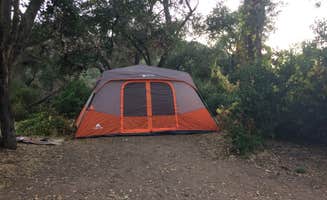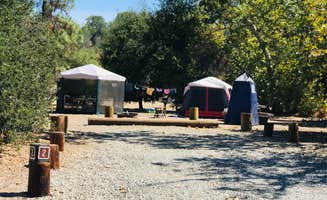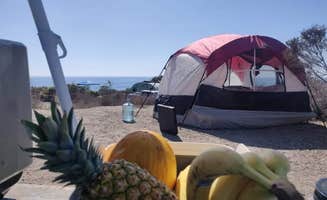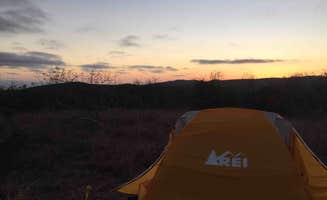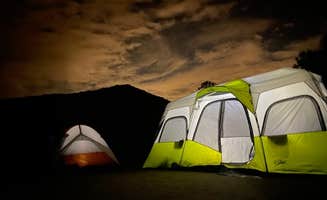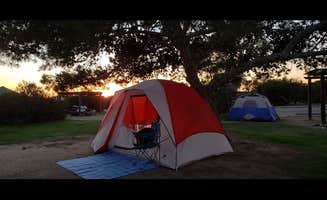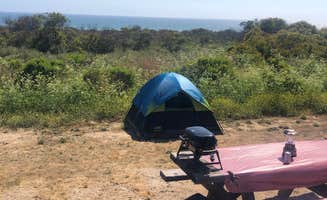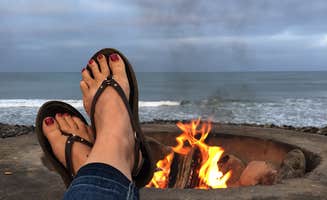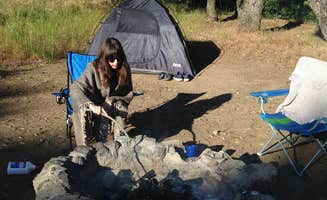Ladera Ranch camping options span from ocean bluffs to canyon settings within a 30-mile radius. The region's Mediterranean climate makes year-round camping possible with average summer temperatures reaching 85°F and winter lows rarely dropping below 45°F. Coastal campgrounds often have morning fog that burns off by midday, while inland sites experience more temperature variation with hotter days and cooler nights.
What to do
Hiking trails for all levels: O'Neill Regional Park provides extensive trail networks through Trabuco Canyon's oak woodland and chaparral habitats. "Great if you like hiking, biking, MTB, and running," one visitor notes of the O'Neill Regional Park. The park features the family-friendly "Story Trail" where "the hike features a new book every month, each page is mounted to a placard along the trail."
Water activities beyond the beach: While surfing is popular at coastal sites, Newport Dunes offers alternative water recreation. "In the middle of the lagoon they have blow up obstacle in the water to climb on.. great place to relax," mentions a camper at Newport Dunes RV Resort. The lagoon provides a protected swimming area better suited for families with young children than the open ocean beaches.
Mountain biking opportunities: The inland canyons provide technical trail riding options. A rider at Ronald W. Caspers Wilderness Park explains, "If you like hiking or mountain biking this is a great park for you!" Many cyclists camp at Caspers as a base for accessing the connecting trail networks that lead toward Trabuco Creek and Holy Jim areas.
What campers like
Beach proximity with privacy balance: San Mateo Campground offers a unique combination of beach access without the crowds. "Clean campground, most of the spots are super private! A fun little hike (1.5 miles) to the walk until tresels beach," notes a visitor to San Mateo Campground — San Onofre State Beach. The campground's inland location provides more separation between sites than direct beachfront camping.
Evening atmosphere: Crystal Cove's elevated position creates memorable sunset experiences. "We stayed at the lower campsite...and I think this was the best spot in the campground as it had an unobstructed view of the water and was far enough away from others, but still easy to get to the restroom if needed. The sunset was absolutely beautiful and in the morning we were high up above the marine layer which was really cool to see," writes a backpacker about Moro Campground — Crystal Cove State Park.
Wildlife viewing: The inland parks offer more animal sightings than coastal locations. "Plenty of squirrels, bunnies, the occasional deer and coyotes at night, signs warning you are now in mountain lion territory," reports a camper at Caspers Wilderness Park. Another visitor mentions, "Fun fact: This park used to be covered by the Pacific Ocean so there are remnants of marine fossils along the riverbanks."
What you should know
Seasonal considerations: Summer weekends require advance planning. "Most spaces are long enough for big rigs but tight because of vegetation. Bath houses are OK but there are a lot of them. Paid showers," notes a visitor to San Clemente State Beach Campground. Weekday camping, especially in spring and fall, offers more availability and lower rates.
Ant problems at coastal sites: Several campgrounds have ant issues that require preparation. "We made the mistake of not being prepared for the ANTS!!! Campground looked pretty cool, so close to the beach, some trails nearby. Room for kids to ride bikes... but we picked up about a gazillion ants. It was pretty much a sheet of them," warns a San Mateo camper who recommends, "We learned that comet around all points of contact with the ground keeps them down."
Weather variations: Coastal fog can create significant temperature differences. "You can feel the beach breeze! The walk to the beach was amazing too!" shares a San Clemente camper. Inland sites like O'Neill Regional Park and Caspers Wilderness experience hotter days and require shade structures during summer months, while coastal locations rarely need additional shade.
Tips for camping with families
Child-friendly beaches: Not all beaches are equal for young swimmers. "The beach is very pretty. The campground was quiet enough, though the spaces are very close together with little to no privacy in between campsites," reports a visitor to Doheny State Beach, noting its gentler surf conditions compared to other nearby beaches.
Playground access: Several campgrounds feature dedicated play areas. O'Neill Regional Park offers "a great playground for children" and "recently paved streets (perfect for scootering, skating, biking)," according to a family camper who rated it "⭐️⭐️⭐️⭐️⭐️" for kid-friendliness.
Educational opportunities: Many parks provide ranger-led programs. "Lots of hiking trails around, or take the walk across the beach to the shake shack!" suggests a visitor to Crystal Cove who described it as "great for a local glamping trip!" The Crystal Cove Visitor's Center offers marine life exhibits and historical information about the area's beach cottages.
Tips from RVers
Hookup availability: RV sites with full utilities are limited in the region. "Nice, clean, easy access for trailers/rv's. Not an easy or quick access to the beach from the rv and tent areas, so just plan on spending time there!" notes a visitor to San Clemente State Beach. For full hookups, Newport Dunes offers the most comprehensive services but at premium rates.
Site selection strategies: Campground layout significantly impacts the camping experience. "We stayed at campsite #58 which we felt was very large are private. Will definitely come back," shares an O'Neill Regional Park visitor, highlighting the importance of reviewing campground maps before booking. End sites and those backing to natural areas typically offer more privacy.
Generator restrictions: Most state beach campgrounds have strict generator hours. "There are no hookups but you can use a generator. We were surrounded by tent campers with 15 people in a site who partied all night yet complained when we used our generator during generator hours," explains an RVer at San Onofre's Bluffs Campground, emphasizing the importance of understanding each park's specific noise policies.


